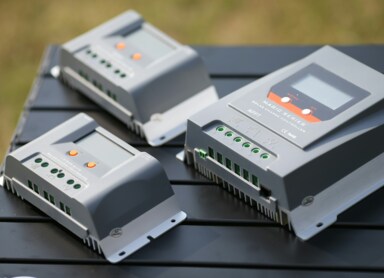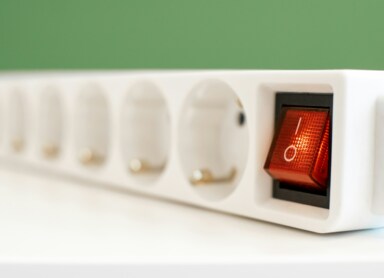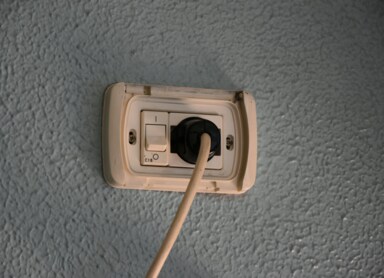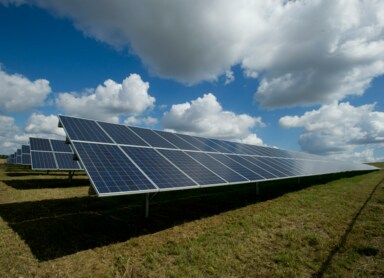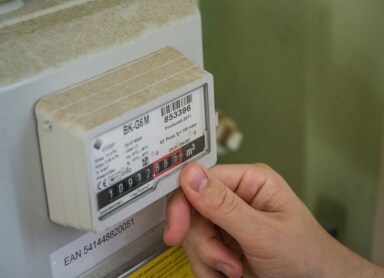Monthly electricity consumption in a single-family house – how much energy do you need?
The primary factor affecting electricity demand is the number of household members. The more people use the network connected to one PPE point, the higher the bills will be—and that’s only natural. Of course, every family’s energy demand is individual, but general market trends can be identified:
- A single-person household uses about 1,200 kWh per year (and as little as 1,000 kWh with an economical lifestyle).
- A two-person household uses about 1,600–2,000 kWh per year.
- A three-person household uses about 1,800–2,200 kWh per year.
- A four-person household consumes about 2,400 kWh per year.
- A five-person household consumes on average 2,600–2,800 kWh per year.
Although the difference in electricity consumption is clearly visible, the increase is not exponential. In other words, a five-person family does not consume five times more power than a single person. The reason is simple: many electrical appliances are used by everyone in the home. When the fridge, washing machine, or stove is running, they consume roughly the same amount of power regardless of how many people live in the house (depending slightly on usage load). This is one reason why living in a group is generally cheaper.
Average monthly electricity consumption in a single-family house – how to calculate it?
Although everyone uses electricity daily, consumption is not constant—it depends on the time of day, season, and the lifestyle of the residents. In summer, less lighting is needed than in winter because the days are longer. People working night shifts also use less power during the day, lowering their overall consumption.
To calculate your average monthly electricity consumption, gather all your electricity bills from the past 12 months (or another chosen period). Add up the total consumption and divide it by the number of bills. The result will show your average monthly electricity use.
You can also calculate usage for each device separately by monitoring its power and operation time, but in practice this is time-consuming and offers only partial insights.
If you haven’t introduced major lifestyle or equipment changes—like buying new appliances, installing air conditioning, or purchasing an electric car—your energy consumption should stay relatively stable. However, gradual increases in energy prices are expected due to the rising cost of coal, Poland’s main energy source. This is one reason why more and more households are turning to renewable energy sources (RES).
What affects electricity consumption in a single-family house?
There are many factors that can increase electricity consumption, including:
- High-power household and electronic appliances,
- Remote work,
- Use of low energy-efficiency devices,
- Installation of HVAC systems (air conditioning, ventilation),
- Use of electric heating systems (e.g., heat pump, underfloor heating),
- Purchase of an electric car and home charging station.
Daily habits also matter. Forgetting to turn off lights, radios, or TVs when leaving a room may seem trivial but can make a noticeable difference over a year.
Electricity consumption can also spike temporarily during home renovations, as power tools often draw several thousand watts.
How to reduce monthly electricity consumption in a single-family house?
There are many ways to lower electricity usage—some require financial investment, others just good organization and consistent habits.
Energy-saving habits
Common sense matters most. Turn off lights when leaving a room and unplug unused electronics. Teach children to develop these good habits early.
If you mainly use electricity during evenings or weekends, consider switching to a different energy tariff. This change is free and available through all energy providers. Instead of the popular G11 tariff, you can choose G12, G12w, or G13. These offer cheaper electricity during off-peak hours and higher rates at other times—so you can adjust your schedule accordingly. You can also compare providers and switch to a cheaper electricity supplier.
Energy-efficient appliances
When buying household appliances, pay attention to energy efficiency labels. Although most new devices are efficient, many homes still use decades-old appliances. The current rating scale runs from A (most efficient) to G (least efficient)—the further down the alphabet, the higher the operating cost. Energy labels are usually placed directly on the appliance or found in the user manual.
If possible, replace traditional light bulbs with energy-efficient LEDs. They last much longer and generate almost no heat, making them safer for children.
Building Management System (BMS)
Another, more advanced option is installing a BMS (Building Management System)—part of the smart home concept. In short, it’s a central control system connected to home installations and devices (like lighting or air conditioning). When a certain condition is met, the system sends a signal to control the device—turning lights on or off automatically, for example. These systems are highly customizable and can be tailored to your family’s needs.
Photovoltaic installation
Solar panel systems have become extremely popular. Silicon panels mounted on the roof or ground convert sunlight into electricity to power your home. Photovoltaics are maintenance-free, eco-friendly, and zero-emission, capable of powering nearly all household devices.
Excess energy can be stored in batteries or sent back to the power grid to be used or credited later. Currently, solar installations are eligible for financial support under Poland’s “Mój Prąd” (My Electricity) program. The sixth edition offers up to PLN 28,000 in subsidies.
Looking for ways to cut your electricity costs?
At REO.pl, we know how to do it best! Contact us, and we’ll help you design a customized green energy strategy for your home or business.

